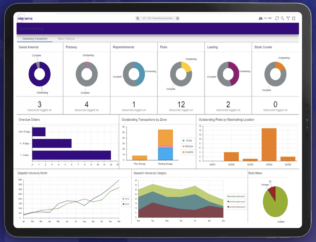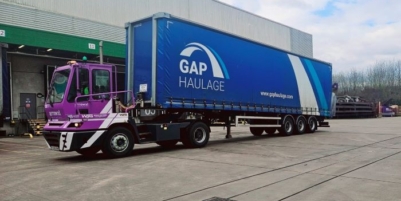-
Nutrivend selects Forterro’s Orderwise to support online expansion and streamline operations - April 11, 2025
-
ARROWXL LAUNCHES AMBITIOUS ZERO WASTE ROADMAP - April 8, 2025
-
THE BCMPA’S NEW CAMPAIGN DRIVES OUTSOURCING SUCCESS IN Q1 - April 7, 2025
-
BLACKOUT TECHNOLOGIES TARGETS TELEMATICS-INTEGRATED MOBILE DEVICE BLOCKING TO COMBAT SMARTPHONE DISTRACTION - April 1, 2025
-
Sparck Technologies awarded Royal designation - March 27, 2025
-
OpenADR Alliance announces first OpenADR 3.0 certified products with EVoke Systems, E.ON Energy and Universal Devices - March 25, 2025
-
Growing fulfilment and contract packer appoints new Managing Director - March 25, 2025
-
When is it time to invest in a WMS? Understanding the key trigger points - March 25, 2025
-
eCapital helps Vantage Recruitment on its journey to financial success - March 24, 2025
-
Hugo Beck Celebrates 70 Years of Packaging Innovation with Open House Events - March 20, 2025
There is an old saying that applies equally wherever in the world you are running a business. The customer is basically always right. Americans say the ‘Customer is King’ and in the UK, being slightly more reserved, we talk about being ‘Customer Driven’. Germany has a more direct translation, der Kunde ist König and in France, le client n’a jamais tort or ‘the customer is never wrong’ is the general maxim. Japan takes customer appreciation a step further with the motto okyakusama wa kamisama desu, which means ‘the customer is a god’.
Customers and their requirements need to be front and centre in the thoughts of every business decision. What happens in the warehouse is no exception. Customer centricity is so important that it is driving the priority metrics being used to measure warehouse performance. Recent research published in the Warehousing Education and Research Council (WERC) DC Measures Report 2023 highlighted that the top 4 metrics were directly related to customer satisfaction. It’s not surprising given how much more demanding customers have become as a result of e-commerce. Competing brands are only a click away, timeliness and convenience is everything.
What are the top DC metrics?
Putting customers first
Right at the top are metrics that directly relate to ensuring customer satisfaction. According to the report’s authors, these measures indicate a noticeable shift at the top of 2023’s rankings, demonstrating an increased laser focus on customers. The new top four are all customer-facing measures and represent the different dimensions of another well known metric, the perfect order index. This is a score that many warehouses benchmark their performance against and it measures the four major components of a perfect order: delivering orders on-time, shipping them damage-free, complete and with correct documentation.
Typically companies with higher perfect order rates carry less inventory, experience shorter cash-to-cash cycle times, and have far fewer stockouts. Conversely imperfect orders lead to increased shipping labour costs, the need to provide replacement products, and lower revenue due to lost sales and customers.
Interestingly, being able to attain the perfect order index measure is only possible if the warehouse has full visibility of available stock and operational performance in real-time. This requires a level of automation that can be attained by implementing a warehouse management system WMS software solution. Using a WMS provides an instant overview of when orders were shipped against delivery targets and the immediate stock availability tracking functionality ensures that orders are either shipped complete, or customers are at least notified of any expected delays from the outset.
In a highly competitive e-commerce environment, where margins are ultra-thin and customers are swayed easily and free to shop around for alternatives, service is absolutely everything. The customer is always the king (or König) and any systems that can enable them to feel that way routinely when they buy from your company will help ensure your brand keeps its share of wallet and stays front of mind.
Author
Eric Carter, Solutions Architect at Indigo Software.
For more information about using Indigo WMS to track key metrics in your warehouse, contact Indigo Software.
































